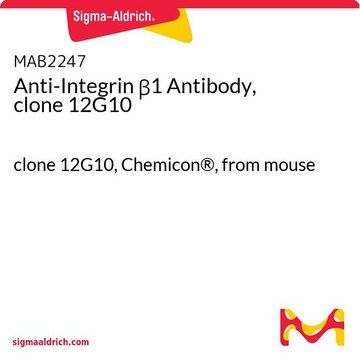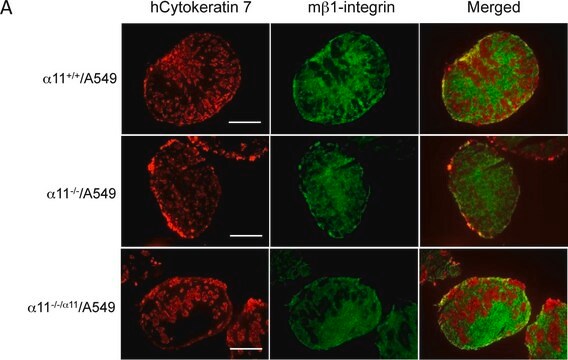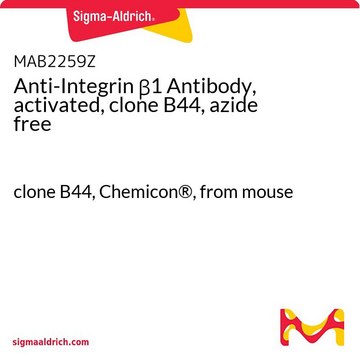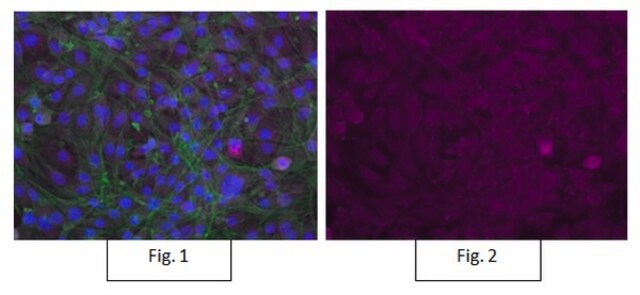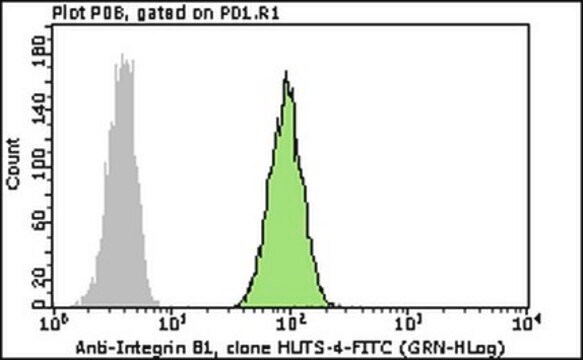MAB2079Z
Anti-Integrin β1 Antibody, activated, clone HUTS-4, Azide Free
clone HUTS-4, Chemicon®, from mouse
Synonym(s):
Ligand-inducedBindingSite, LIBS, CLIBS, MAB2079
About This Item
Recommended Products
biological source
mouse
Quality Level
antibody form
purified immunoglobulin
antibody product type
primary antibodies
clone
HUTS-4, monoclonal
species reactivity
rat, human
manufacturer/tradename
Chemicon®
technique(s)
ELISA: suitable
flow cytometry: suitable
immunohistochemistry: suitable
western blot: suitable
isotype
IgG2b
NCBI accession no.
UniProt accession no.
shipped in
wet ice
target post-translational modification
unmodified
Gene Information
human ... ITGB1(3688)
rat ... Itgb1(24511)
General description
Specificity
Immunogen
Application
Immunohistochemistry: fresh frozen, or light fixation, with 4% PFA permeabilized with 0.1% triton X-100 in the presence of Mn++ as the epitope of HUTS-4 is dependent upon Mn++ ion. Note antibody only stains activated beta1 integrins. Activated beta-1 integrins are typically found in wound regions for instance (see http://www.ncbi.nlm.nih.gov/books/bv.fcgi?rid=eurekah.figgrp.12951) . Use MAB1981 or CBL1333 for general beta1 integrin staining and detection.
Western Blotting: non-reducing conditions only (see: http://www.jbc.org/cgi/content/full/271/19/11067).
FACS analysis: 2.5 μg antibody / 5 x 105 cells.
Cell Structure
Integrins
Target description
Physical form
Storage and Stability
Analysis Note
Human lung, liver, and skeletal muscle tissues
Other Notes
Legal Information
Disclaimer
Not finding the right product?
Try our Product Selector Tool.
recommended
Storage Class Code
12 - Non Combustible Liquids
WGK
WGK 2
Flash Point(F)
Not applicable
Flash Point(C)
Not applicable
Certificates of Analysis (COA)
Search for Certificates of Analysis (COA) by entering the products Lot/Batch Number. Lot and Batch Numbers can be found on a product’s label following the words ‘Lot’ or ‘Batch’.
Already Own This Product?
Find documentation for the products that you have recently purchased in the Document Library.
Our team of scientists has experience in all areas of research including Life Science, Material Science, Chemical Synthesis, Chromatography, Analytical and many others.
Contact Technical Service